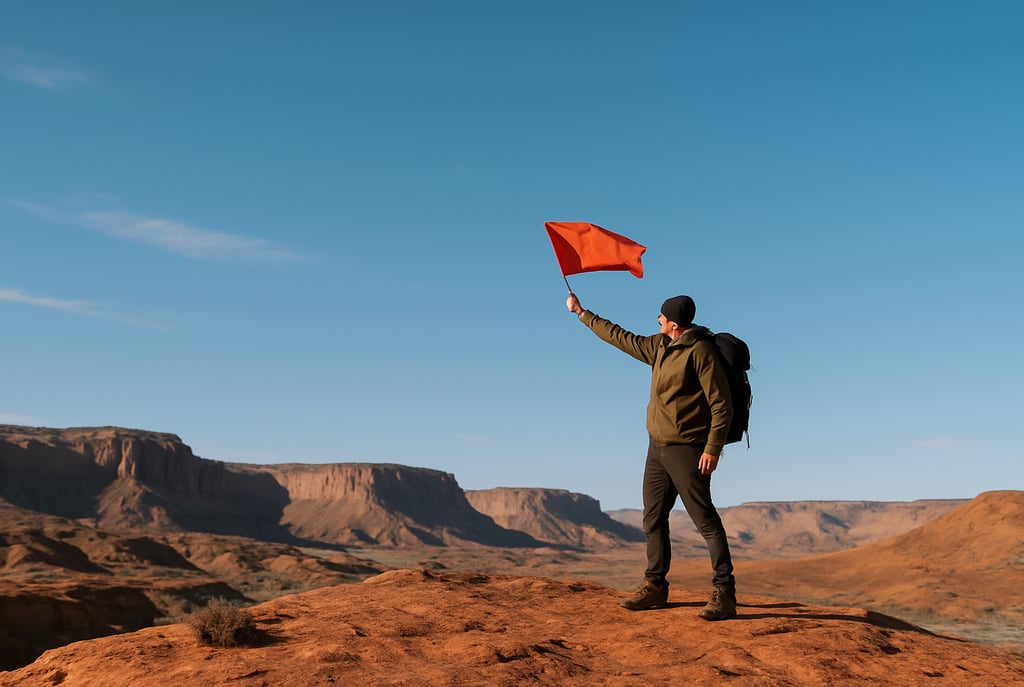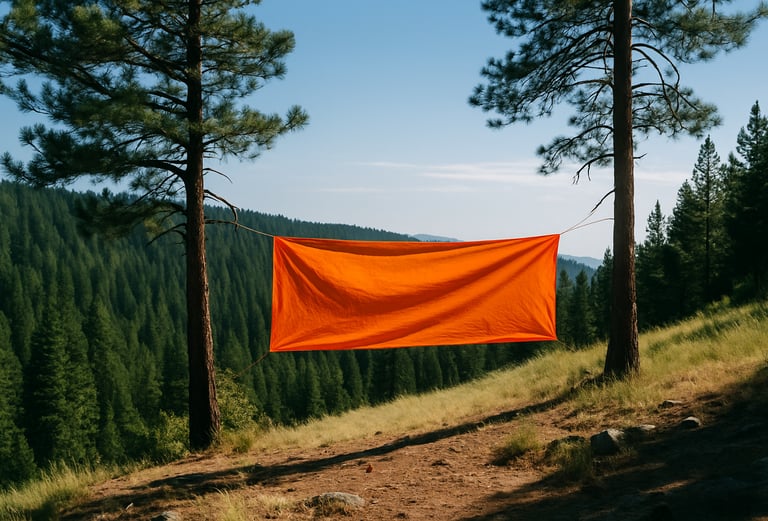Using Visual Signals to Call for Rescue: How to Get Noticed in the Wilderness
Learn how to use visual rescue signals to increase your chances of being seen in the wilderness. Discover high-contrast materials, ground-to-air symbols, and movement techniques that work in real survival situations.


Using Visual Signals to Call for Rescue: How to Get Noticed in the Wilderness
When you're lost or stranded in the wilderness, attracting attention can mean the difference between being rescued quickly or waiting in uncertainty. While whistles, flares, and technology all play important roles, visual signals are some of the most effective ways to get noticed by search teams, aircraft, or passersby.
In this guide, we’ll explore how to use visible signals in a survival situation, what materials work best, and when to use them for maximum impact.
What Are Visual Rescue Signals and Why Are They Effective?
Visual signals are any type of rescue signal that can be seen from a distance. These can include everything from bright colors and reflective materials to large patterns made in open areas. Their main goal is to catch attention — especially from the air — and alert rescuers that someone needs help.
The reason visual distress signals are so important is that they don’t rely on batteries or noise to work. They can remain visible even when you’re not physically present, and if designed properly, they’ll stand out from the natural surroundings.
High-Contrast Colors Make a Difference
One of the best ways to create a visual signal is by using bright, unnatural colors that contrast with your surroundings. Survival experts recommend using items like an emergency blanket, brightly colored clothing, a tarp, or even a tent fly. You can learn more about using flags or clothing to signal for rescue, including which materials provide the highest contrast in different environments. These can be laid out flat in open areas or draped from branches to be visible above the treeline.
Creating Shapes and Symbols That Rescuers Recognize
Large ground-to-air symbols are universally understood by search and rescue teams. The letters SOS or HELP are highly recommended. For more on this, check out our article on ground-to-air symbols like SOS and how to build large, readable distress messages using basic natural materials. You can create these with rocks, logs, branches, or even gear laid out in clearings. Make sure the symbols are large — at least 10 to 12 feet tall — and spaced clearly so they don’t blend together when seen from above.
Try to stick to straight lines and block letters for visibility. If you have contrasting materials (like white fabric on green grass or dark rocks on snow), use those to give your symbols more pop. If nothing else, three large shapes placed in a triangle is an internationally recognized distress pattern.
Movement Catches the Eye
Visual signals that move are even more likely to get noticed. Tie strips of fabric to sticks so they flutter in the wind. If you're able to wave a shirt or tarp when you hear a plane or see someone in the distance, do it — the human eye is naturally drawn to motion, especially in still environments like forests or deserts.
Maximize Visibility Based on Time of Day
During the day, make sure your signal is in direct sunlight and not shaded by trees. If possible, choose open areas like ridges, riverbeds, or clearings. At night, you can combine visual signals with light-based ones: reflective surfaces, glow sticks, or flashing lights from your phone or headlamp can help your signal continue working even when it’s dark. You can also use glow sticks, flashlights, or reflective tools more effectively by understanding the best signaling techniques for low-light rescue.
Closing Thoughts
Using visual signals for rescue is one of the most straightforward survival strategies, and it doesn’t require any special equipment, just some creativity and good judgment. Whether you're laying out an SOS in rocks or using your rain jacket to flash color through the trees, the goal is always the same: be seen. With a little planning and the right technique, your visual signal could be the thing that brings help to your location.
For another highly visible option, read our guide on using fire as a rescue signal to create smoke and flame signals that stand out in remote areas.




© 2025. All rights reserved About | Privacy Policy | Terms and Conditions | Affiliate Disclosure | Disclaimer


